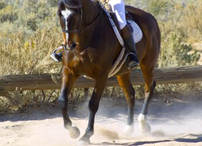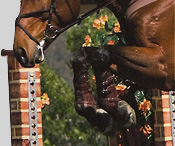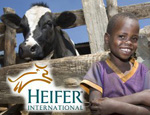



"Building healthy partners"
Understanding Influenza

Equine influenza shares many similarities with the human flu virus that has been particularly brutal this year. The equine virus exists worldwide, except in New Zealand and Iceland. Clinical signs include fever, depression, poor appetite, cough and nasal discharge. The virus only lives a short time in the environment and is susceptible to common disinfectants. In most cases the virus is spread from horse to horse in aerosolized particles generated when an infected horse coughs. Unfortunately, virus replicates in the horse’s upper respiratory tract and is shed into the environment for a few days BEFORE any clinical signs become apparent, making control of disease outbreaks challenging, especially in larger groups of horses. The virus has many serotypes, and these strains change frequently. The horse must have antibodies specific to each serotype to prevent disease. I imagine the flu virus as a secret agent – every time he appears he is wearing a different hat and coat so I don’t recognize him until it is too late and I have already walked up to say hello and shake his hand…..and a few days later I am coughing and sneezing, or watching my horse cough and hang his head. Both we and our horses manufacture antibodies that are shaped to fit the “hat and coat” of each flu strain that infects us – when exposed to a virus strain wearing a new “hat and coat” the old antibodies may not accurately recognize and attack the new virus and so we get sick all over again. Don’t get confused here – while equine influenza virus and human influenza viruses
share the same infection tactics, and do have antigenic similarities, so far horse to human transmission is not a clinical problem. Equine Influenza has however caused serious influenza outbreaks in our canine companions. Pharmaceutical companies making vaccines against Equine Influenza know that in order for their vaccine to be effective, it must contain the most up to date viral strains in a given location. They weigh this against the cost of introducing new strains into their current vaccine. The World Organisation for Animal Health global Equine Influenza Surveillance Program was initiated in 1995, and makes regular recommendations for the most current Equine Influenza strains to be included in vaccines. The Merck influenza vaccine used in our practice (Prestige 2) contains Equine influenza virus type H3N8 strains EIV A/eq/Florida/RW/13, EIV A/Equine 2/Kentucky/02 American, EIV A/eq/Richmond/1/07 strains. Merck and UC Davis co-sponsor the ongoing Equine Respiratory Biosurveillance Study. The Influenza strains included in Prestige 2 are based on this study, and include the Florida ’13 Clade 1 highly pathogenic isolate identified in the Ocala 2013 outbreak. There may be some of you reading this thinking, “well I got my flu shot and still came down with the virus, why should I vaccinate my horse?” My answer is this: vaccination against Equine Influenza does not guarantee protection from disease, but it can dramatically reduce the incidence and severity of illness. Consider any population of horses with stressors such as competition, travel, breeding, changing populations. If ALL of the horses in such a group are vaccinated against influenza the consequences of infection with flu virus are greatly reduced. Although equine influenza vaccines may not be absolutely protective, they do reduce the virus’ ability to replicate in each horse, and therefore reduce the number of virus particles released into the environment and passed from horse to horse. If EVERY horse in your barn is vaccinated, when Equine Influenza enters the population the viral load in the vicinity is kept low, fewer horses actually contract disease, and the outbreak event is over much sooner, with fewer sick horses. On the other hand, if all the horses is a population are not vaccinated at the same time and on a regular schedule, the vaccinated individuals may have sufficient immunity to protect them from showing signs of disease but may still contract a mild flu infection and shed low numers of virus particles. The unvaccinated, or poorly vaccinated horses in the population, especially the young and old, then serve as living incubators for the virus shed by vaccinated horses. The result is often a more severe and prolonged disease outbreak moving slowly through the barn. Horses, especially younger ones, living in groups without diligent vaccination, rapidly spread virus from one to another making it very difficult for humans in charge to stay ahead of disease spread. In larger barns, the outcome is usually quarantine of the entire facility for 21 days or longer, or until 7 days after the last horse has any clinical signs or fever. As you can imagine, such an outbreak has serious impacts, both on horses’ health and humans’ pocketbooks. The risk of pneumonia and other serious complications increases dramatically in such settings. So, the bottom line regarding influenza vaccines in horses is this: all horses in boarding facilities, and/or horses that travel to competitions, should receive an influenza (typically as a combined “flu/rhino” vaccine) every 6 months. The United States Equestrian Federation requires proof of flu/rhino vaccination within 6 months at all registered equestrian events.
Call us today to schedule
your Spring appointment.
© High Desert Equine
PO BOX 60730
RENO NV 89506
EMERGENCY (775) 742-2823 OFFICE (775) 969-3495
FAX (775) 969-3923





